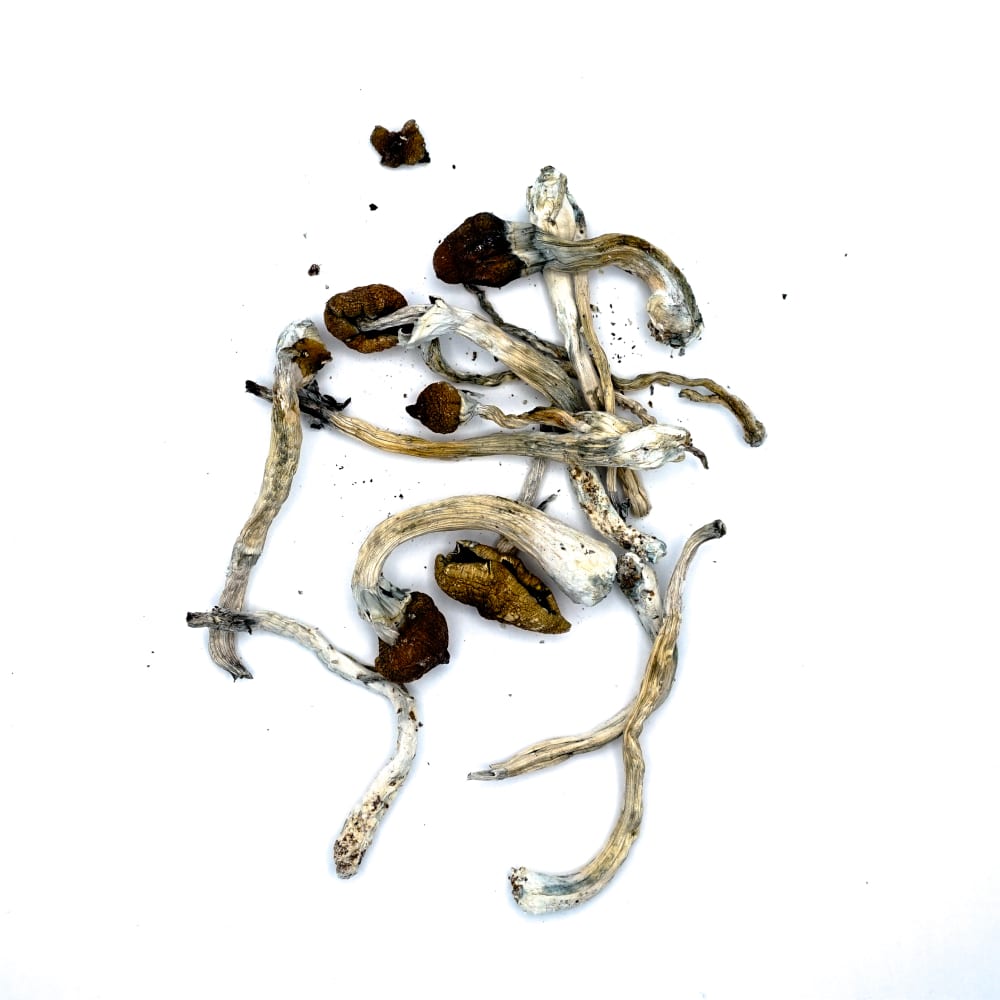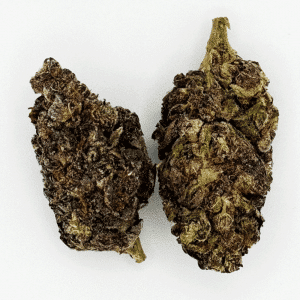No products in the cart.

African Pyramid
These mushrooms, known for their distinctive pyramid-shaped caps, have long been enshrouded in mystery and cultural significance.
African Pyramid Shrooms: in Details
Researchers have been intrigued by the unique psychoactive compounds present in these shrooms, which have shown promise in treating a range of mental health disorders.
African Pyramid Specs
| Potency | Above Average |
| Cultivation | Beginner |
| Species | Psilocybe cubensis |
| Cost | $-$ |
| Rarity | ★★★ |
Unveiling African Pyramid Magic Mushrooms
Origins
African pyramid magic mushrooms have a rich history. They are initially found in the warm regions of Africa. These mushrooms have been part of local cultures for centuries. People used them in various rituals and ceremonies.
The historical context of their usage is fascinating. Ancient Africans may have used these mushrooms for healing or spiritual guidance. Over time, their use has evolved but always retained a sense of mystery and respect.
They came to be known as African pyramid magic mushrooms due to their shape and origin. The name reflects both their physical appearance and cultural importance.
Variations
There are several types of African pyramid magic mushrooms, each with unique traits:
- Some variations are more potent than others.
- Effects can vary greatly among different types.
- These variations spread across different parts of Africa.
- Each type has distinctive features that affect experiences.
For example, the pan cyanescens mushroom is one variation known for its strength.
These differences influence how people experience the mushrooms’ effects on mind and body.
Historical Significance
Hallucinogenic Traditions
Traditionally, hallucinogenic properties were integral to many societies:
- They played a key role in spiritual rituals.
- Healing practices often involve these substances.
- Societal views on such traditions varied widely.
- Their impact on the mind and body was significant during rituals.
Today’s interpretations adapt these ancient uses into modern contexts.
Religious Connections
Magic mushroom use also had religious implications:
- They connected users to higher realms or beings during religious ceremonies.
- Some communities viewed them as sacred gifts from deities or ancestors.
This connection remains an area of interest even today as we explore our pasts.
Therapeutic Potential of Magic Mushroom Extracts
Cellular Protection
Mushroom extracts have shown promise in protecting cells from various types of damage. One key aspect is their ability to modulate TNFα levels, a substance involved in systemic inflammation. When our bodies face stress or injury, TNFα can induce apoptosis, the process where cells are programmed to die. However, magic mushroom extracts might help reduce unnecessary cell death.
Researchers observed that when cells were treated with these extracts, they exhibited lower rates of apoptosis under stressful conditions. This suggests that compounds within mushrooms could act as guardians at the cellular level.
Another factor is the management of reactive oxygen species (ROS) which can lead to oxidative stress and hinder cell growth. Studies indicate that water extract from magic mushrooms may counteract this by promoting antioxidant activity similar to positive control quercetin—a known powerful antioxidant.
Cardiomyocyte Health
The heart’s muscle cells, known as cardiomyocytes, are vital for maintaining cardiovascular health. These cells can be adversely affected by substances like endothelin-1 which cause hypertrophy—or an increase in size—which weakens cardiac function over time.
Magic mushroom water extracts show potential in combating this issue. Research has demonstrated that these extracts might inhibit the effects of endothelin-1-induced hypertrophy on cardiomyocytes. By doing so, they support a more sustainable heart muscle size and contribute to overall heart health.
Mitochondrial activity within cardiomyocytes is also crucial since mitochondria generate most of the cell’s supply of adenosine triphosphate (ATP), used as a source of chemical energy. Mushroom extracts have been linked with improved mitochondrial function, which ensures efficient energy production for healthy heartbeats.
7-28G Dried African Pyramid Mushrooms
The African Pyramid, also known as African Transkei (A.T.) or South African Transkei (S.A.T.), is a unique strain of Psilocybe cubensis originating from the arid and sunny Wild Coast Region in South Africa.
-
$55.00 – $180.00
Psilocybin and Mental Health
Dendritic Growth
Psilocybin, a compound found in African pyramid magic mushrooms, has been linked to dendritic growth. This means it can stimulate the growth of neurons’ dendrites, which are like branches that help cells communicate with each other.
We have learned that this process is vital for brain health. It can lead to better memory and learning abilities. For example, when one of us struggled with retaining information during studies, the potential for improved cognitive function was an encouraging thought.
Research suggests psilocybin could even help repair brain damage from trauma or disease. It’s fascinating to think how these natural substances might aid in mind healing.
Short-term Effects
The short-term effects of African pyramid magic mushrooms are both physical and psychological. We often experience changes in perception right after consumption.
Visual alterations can include brighter colors and patterns that aren’t really there. Emotionally, we may feel joy or euphoria as well as deep introspection or spiritual experiences.
However, not all effects are positive; some of us have felt anxiety or confusion during our adventures with psilocybin mushrooms.
Long-term Effects
When discussing long-term effects on mental health, we’ve noticed several interesting points about psilocybin use over time.
Some studies indicate potential benefits like lasting improvements in mood and outlook on life among users who had profound experiences while taking the substance under controlled conditions.
Others among us have felt more connected to others and more empathetic since exploring these psychedelics regularly but responsibly—always considering setting intentions beforehand for a safe journey together through consciousness expansion.
Yet science still seeks definitive answers regarding how extensive these long-term benefits truly are across different individuals.
Tolerance and Dependence
With any substance comes the risk of tolerance and dependence—and African pyramid magic mushrooms are no exception here either.
Tolerance develops when repeated use diminishes the effect at previous doses. Hence larger amounts become necessary to achieve desired outcomes — a slippery slope we’re careful not to slide down by moderating our usage frequency. However, you can easily avoid tolerance with the African Pyramid magic mushroom microdosing capsules. They enhance your mood without being overwhelming.
Dependence occurs if continued use becomes needed just to feel normal rather than achieving heightened states—we watch out for signs within our group so none fall into this trap unwittingly.
It’s important for us always to stay informed about risks while pursuing holistic wellness collectively through such ancient practices now being rediscovered by modern societies globally today.
By understanding both immediate responses as well as enduring impacts on mental health from compounds like those found within African pyramid magic mushrooms — considering their power yet also respecting their potency—we navigate this terrain together cautiously yet curiously toward potentially richer inner lives shared amongst friends adventuring side by side into realms beyond ordinary reality where healing may indeed await those who seek wisely with open hearts alongside sound minds grounded firmly upon.
Safe Use Guidelines for Magic Mushrooms
Administration
When we decide to explore the world of African pyramid magic mushrooms, it’s crucial how we go about it. The method of administration plays a significant role in our experience. We prefer oral ingestion, which is common and straightforward. Some of us make tea with the mushrooms, while others mix them into food to mask the earthy taste.
We always ensure that our environment is safe and comfortable before beginning. A trusted friend acts as a sober sitter during our sessions, providing reassurance and assistance if needed. It’s important not to overlook this step; their presence can be invaluable.
Setting intentions prior to consumption helps guide our experiences toward personal growth or healing after learning about psilocybin’s potential benefits on mental health in previous sections.
Dosage Understanding
Understanding dosage is key to ensuring a positive experience with magic mushrooms. It’s like finding the right volume for music—not too loud and not too soft.
Minimal Recreational Dose
A minimal recreational dose usually ranges from 0.5 grams to 2 grams of dried weight for most people within our group. At this level, some of us notice mild visual enhancements—a more vivid perception of colors and patterns—and an elevated mood without overwhelming effects.
It’s akin to dipping toes in water rather than diving in headfirst; it gives us a feel for what these mystical fungi have to offer without going too far out of our comfort zones initially.
High Dose Implications
On occasions when some among us seek deeper introspection or profound spiritual experiences, higher doses may be considered—typically above 3 grams dried weight per person—but such ventures are approached with caution due to high dose implications.
At higher dosages, one might encounter intense hallucinations or face challenging emotional revelations that can be difficult but potentially rewarding if navigated properly under guidance or supervision by experienced individuals within the group who understand set and setting principles thoroughly.
By respecting these guidelines around administration and dosage understanding when engaging with African pyramid magic mushrooms—as well as recalling insights gained from exploring psilocybin’s impact on mental health—we create safer spaces for exploration that prioritize wellbeing alongside curiosity-driven adventures into altered states of consciousness.
Cultural Impact of Hallucinogenic Mushrooms
Religious Practices
Hallucinogenic mushrooms have long been integral to various religious rituals. In these sacred practices, they serve as a bridge to the divine. We find that in many cultures, these mushrooms are revered for their ability to induce profound spiritual experiences.
For centuries, shamans and priests have used hallucinogenic mushrooms in their quest for enlightenment. They believe these fungi facilitate communication with higher powers. During such rituals, participants often report transformative visions and insights believed to be messages from gods or ancestors.
The use of hallucinogenic mushrooms is not taken lightly within religious contexts. It’s seen as a serious undertaking aimed at spiritual growth and healing. The reverence given to these natural compounds underscores their significance beyond mere recreational use.
Traditional Ceremonies
In traditional ceremonies across different cultures, the use of hallucinogenic mushrooms has been pivotal in community bonding and rites of passage. These ceremonies often mark important life events like birth, marriage, or death.
During traditional celebrations or communal gatherings, we see how these mushrooms help individuals connect on a deeper level with one another and with nature itself. Participants describe feeling an overwhelming sense of unity and empathy during the experience.
It’s fascinating how traditional knowledge about when and how to use these substances has been passed down through generations. This wisdom ensures that the consumption of hallucinogenic mushrooms remains safe and meaningful within cultural parameters.
Other Notable Strains
-
$60.00 – $190.00
-
$70.00 – $280.00
-
$60.00 – $190.00
The Science Behind the Magic
Psilocybin Research
Psilocybin, the active compound in African pyramid magic mushrooms, has been a subject of fascination for us. This natural psychedelic has intrigued scientists and researchers alike. Through rigorous studies, we’ve come to understand its potential benefits and effects on the human mind.
Research shows that psilocybin can lead to profound changes in consciousness. It’s known for inducing experiences filled with vivid colors, patterns, and deep emotional insights. In controlled settings, psilocybin has been used to explore therapeutic applications. For instance, it may help alleviate conditions like depression and anxiety.
Studies also indicate that this substance could aid in breaking addiction cycles. People who have struggled with smoking or alcohol dependence have reported reduced cravings after psilocybin-assisted therapy sessions. These findings suggest a promising future where magic mushrooms might play a role in mental health treatment.
Cellular Impact Studies
On a cellular level, our understanding of how these substances work is expanding rapidly. Psilocybin appears to influence brain activity by binding to serotonin receptors. Serotonin is a neurotransmitter important for mood regulation, among other functions.
Brain imaging studies reveal that under the influence of psilocybin, there are decreased activities in certain networks within the brain which typically restrict our sensory experiences and thought processes—essentially ‘unlocking’ parts of our minds that are not usually accessible.
Moreover, research suggests neurogenesis—the growth of new neurons—may be stimulated by psilocybin use over time; potentially offering healing properties at the very root of cognitive function.
We’ve seen firsthand how these compounds can dramatically shift perspectives during their effect period—a testament to their powerful impact even at minute levels within our bodies.
Conclusion
Through our exploration, we have delved into the mysterious world of African pyramid magic mushrooms, uncovering their therapeutic potential and cultural significance. We’ve seen how psilocybin can influence mental health and learned safe use practices to harness these benefits responsibly. The science has spoken: there is magic in these ancient fungi, a magic grounded in empirical evidence and rich traditions.
We urge our readers to consider the profound implications of this knowledge. Reflect on how it can shape perspectives on natural remedies and mental wellness. As we close this chapter, let’s open another—engage in informed discussions, advocate for responsible research, and explore the possibilities that lie within nature’s own pharmacy. Together, we can transcend old paradigms and embrace a future where understanding and respect for these powerful substances flourish.
Frequently Asked Questions
What are African Pyramid Magic Mushrooms?
African Pyramid Magic Mushrooms refer to a particular variety of hallucinogenic mushrooms found in Africa, known for their distinctive pyramid-shaped caps.
How do magic mushroom extracts benefit health?
Magic mushroom extracts are being studied for their potential therapeutic benefits, including alleviating symptoms of depression and anxiety.
Can psilocybin improve mental health?
Research suggests that psilocybin, the active compound in magic mushrooms, may have positive effects on mental health by reducing symptoms of certain psychiatric disorders when used under medical supervision.
What guidelines should be followed for safe use of magic mushrooms?
Safe use guidelines include starting with low doses, having a sober sitter present, and avoiding usage if there is a history of psychosis or heart conditions.
How have hallucinogenic mushrooms impacted culture?
Hallucinogenic mushrooms have influenced various cultures through religious rituals and traditional practices due to their mind-altering effects.
What is the science behind the effects of magic mushrooms?
The primary compound in magic mushrooms, psilocybin, interacts with serotonin receptors in the brain to produce alterations in perception and mood.
DISCOVER MORE
-
$70.00 – $180.00
-
$35.00 – $180.00
-
$60.00 – $190.00
-
$60.00 – $190.00









